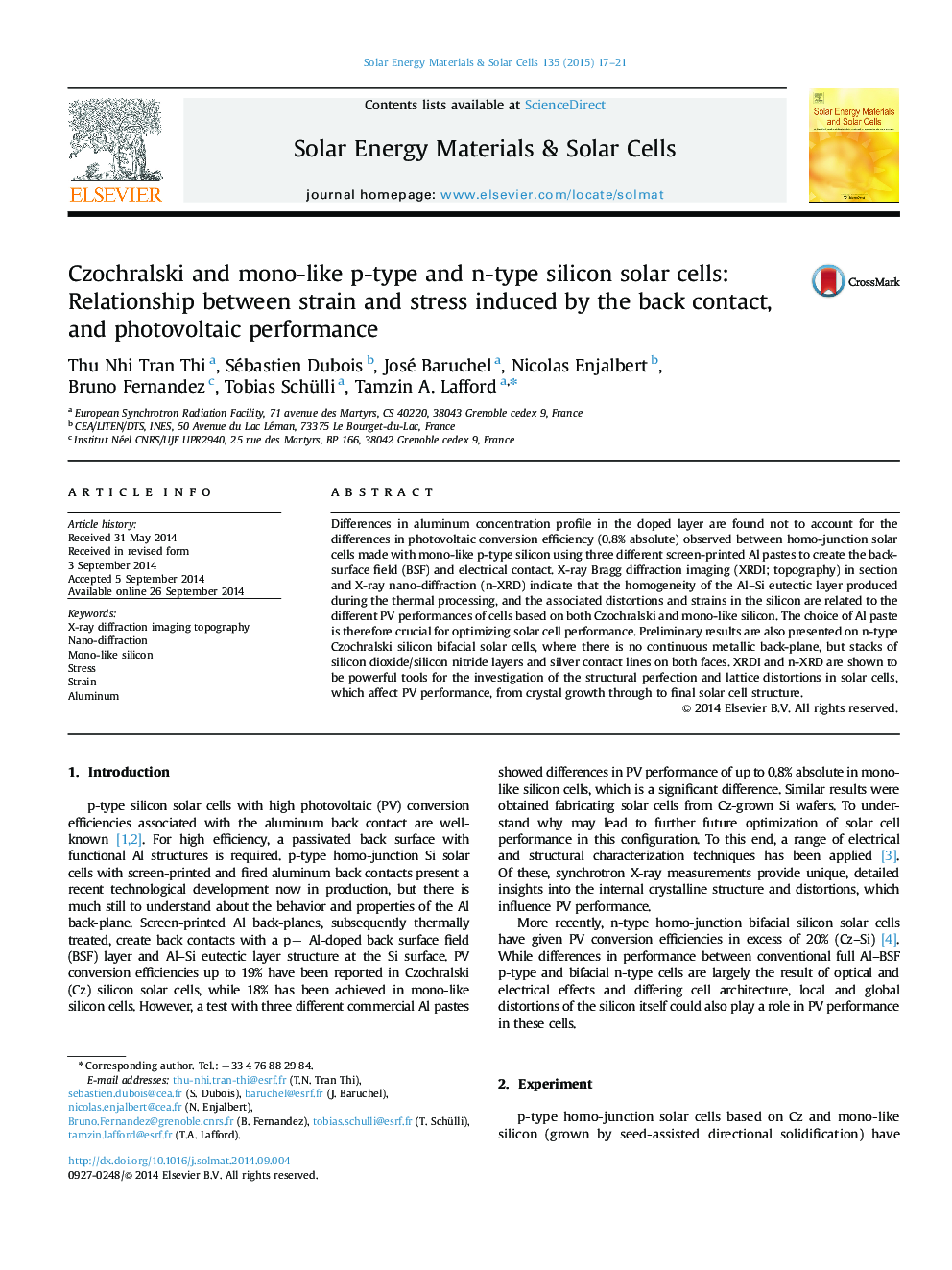| Article ID | Journal | Published Year | Pages | File Type |
|---|---|---|---|---|
| 6535236 | Solar Energy Materials and Solar Cells | 2015 | 5 Pages |
Abstract
Differences in aluminum concentration profile in the doped layer are found not to account for the differences in photovoltaic conversion efficiency (0.8% absolute) observed between homo-junction solar cells made with mono-like p-type silicon using three different screen-printed Al pastes to create the back-surface field (BSF) and electrical contact. X-ray Bragg diffraction imaging (XRDI; topography) in section and X-ray nano-diffraction (n-XRD) indicate that the homogeneity of the Al-Si eutectic layer produced during the thermal processing, and the associated distortions and strains in the silicon are related to the different PV performances of cells based on both Czochralski and mono-like silicon. The choice of Al paste is therefore crucial for optimizing solar cell performance. Preliminary results are also presented on n-type Czochralski silicon bifacial solar cells, where there is no continuous metallic back-plane, but stacks of silicon dioxide/silicon nitride layers and silver contact lines on both faces. XRDI and n-XRD are shown to be powerful tools for the investigation of the structural perfection and lattice distortions in solar cells, which affect PV performance, from crystal growth through to final solar cell structure.
Related Topics
Physical Sciences and Engineering
Chemical Engineering
Catalysis
Authors
Thu Nhi Tran Thi, Sébastien Dubois, José Baruchel, Nicolas Enjalbert, Bruno Fernandez, Tobias Schülli, Tamzin A. Lafford,
